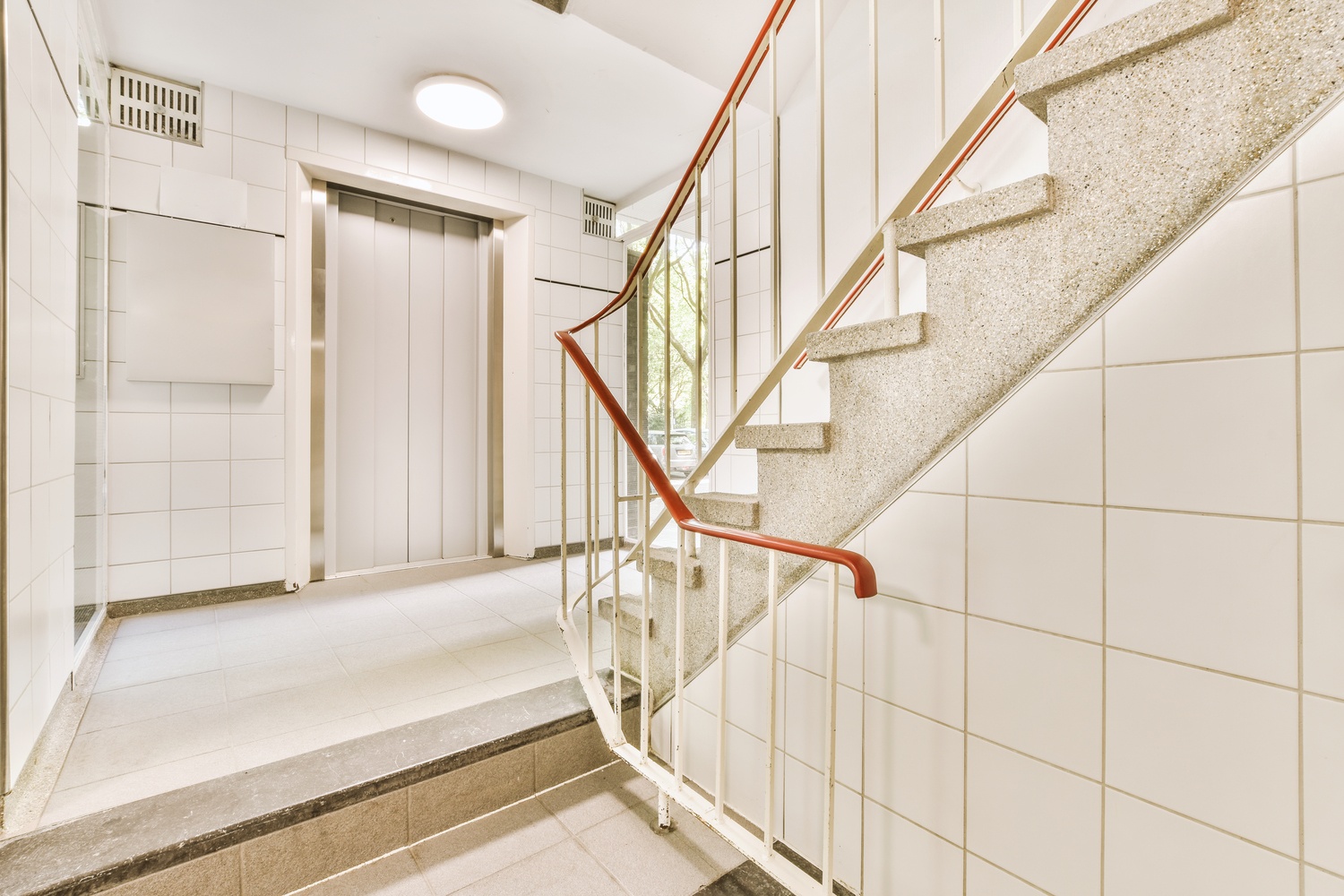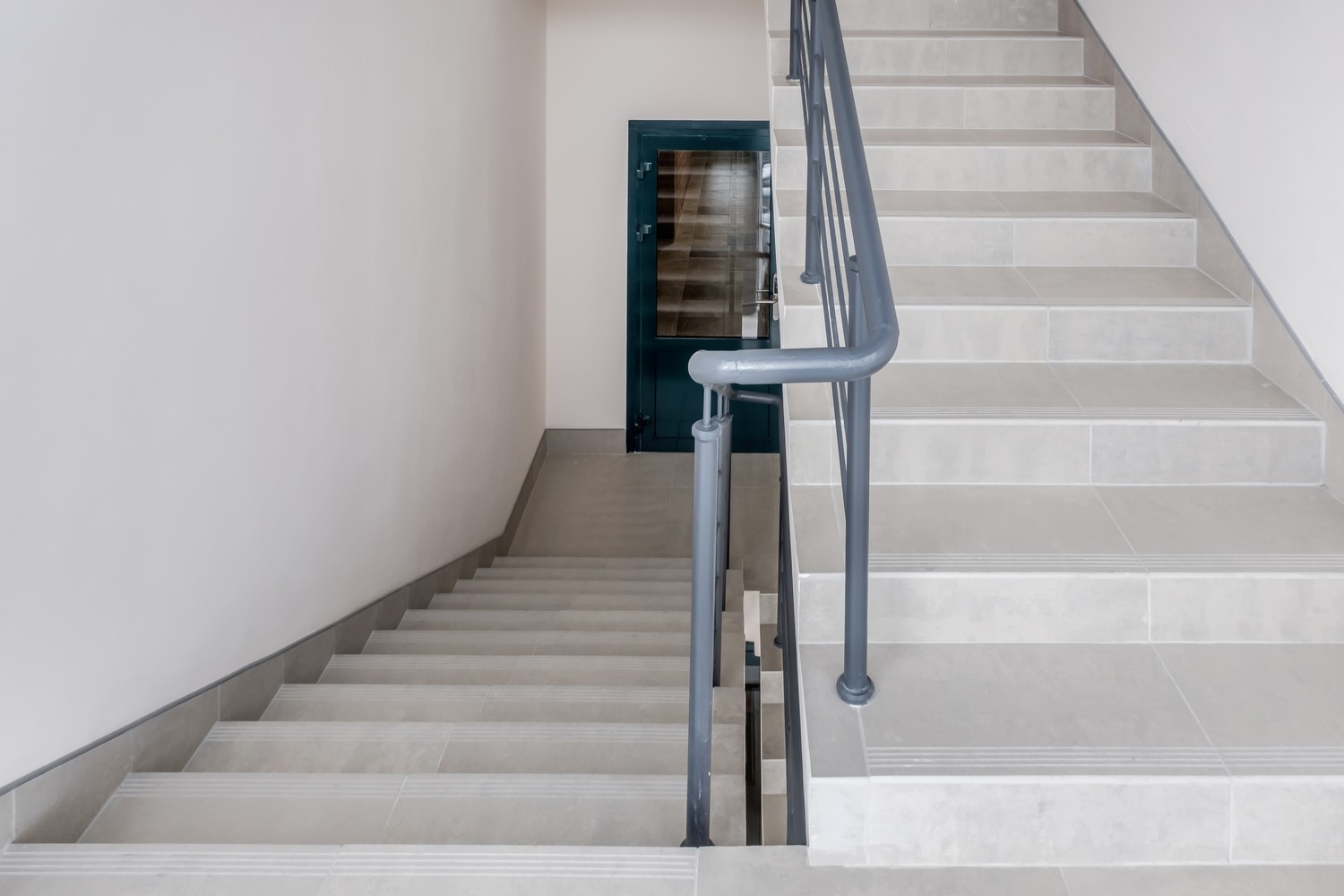Soundproofing a stairwell – Effective solutions for a quieter environment
Soundproofing a stairwell is an important measure for reducing disturbing noise and improving the acoustics in a building. Stairwells are often characterized by hard materials such as concrete, tile, and glass, which cause sound to bounce between surfaces and create a long reverberation time. This can lead to a noisy and stressful environment where the noise level is perceived to be higher than it actually is.
By strategically placing sound absorbers on the ceiling and walls, sound waves can be broken up and the noise level significantly reduced. This makes the stairwell more pleasant to be in, reduces disturbing echoes, and improves sound comfort for both residents and visitors.
Why is sound absorption in stairwells important?
A stairwell often acts as a sound amplifier where footsteps, conversations, and door sounds are reflected and amplified. This can negatively affect both living environments and workplaces by:
- Creating a stressful noise level that affects concentration and well-being.
- Spreading sound between floors, which means that noise can be heard far beyond the source.
- Making it more difficult to communicate due to amplified echoes and reverberations.
By soundproofing the stairwell, sound waves can be broken before they spread, creating a quieter and more harmonious environment.
How can you effectively soundproof a stairwell?
To achieve the best possible sound reduction in a stairwell, ceiling absorption and wall absorption should be combined.
Ceiling absorbers
The first step towards a quieter environment The large surface area of the ceiling makes it a primary source of sound reflections. By installing sound-absorbing panels on the ceiling, sound waves can be captured directly and reverberation reduced.
Wall absorbers
Improves the sound environment at the source Placing sound absorbers on the walls, especially opposite each other, helps to capture sound where it is created. This reduces the spread of sound between floors and prevents the noise from amplifying.
Corner absorbers
Effective sound control In tall stairwells, sound can easily travel between floors. By installing corner absorbers, sound can be reflected away instead of propagating throughout the building.
Diagonally mounted sound absorbers
To break up sound waves In larger stairwells, diagonally mounted sound absorbers between the ceiling and wall can be used to effectively dampen sound reflections and create more balanced acoustics.
Placement of sound absorbers for best effect
To achieve optimal sound reduction, the placement of sound absorbers is crucial.
- Ceiling absorbers should be installed first, as the ceiling is the largest sound-reflecting surface.
- Wall absorbers are placed in the central parts of the stairwell walls to break the sound waves early on.
- Corner-mounted absorbers are used to capture sound where the reflections are strongest.
- Diagonally mounted absorbers between the ceiling and wall create an effective sound barrier and prevent sound from spreading further into the building.
By combining these methods, you can create a sound environment where noise is minimized and the acoustics are pleasant.
What are the benefits of sound absorption in stairwells?
Sound absorption in stairwells has many positive effects for both residents and property owners:
Lower noise levels and less echo
The stairwell becomes a quieter place to be.
Improved comfort for residents and visitors
Less noise contributes to a more pleasant living environment.
Reduced sound propagation between floors
Prevents sound from propagating throughout the entire building.
A more professional and modern indoor environment
Particularly important in public buildings and office properties.
Summary – How to soundproof a stairwell
Creating a calm and pleasant environment in a stairwell requires a well-thought-out solution with the correct placement of sound absorbers.
- Ceiling absorbers should be installed first, as the ceiling reflects the most sound.
- Wall absorbers reduce sound propagation and capture sound waves at the source.
- Corner-mounted absorbers reduce resonance and dampen low-frequency sounds.
- Diagonally mounted sound absorbers between the ceiling and wall effectively break up sound waves.








